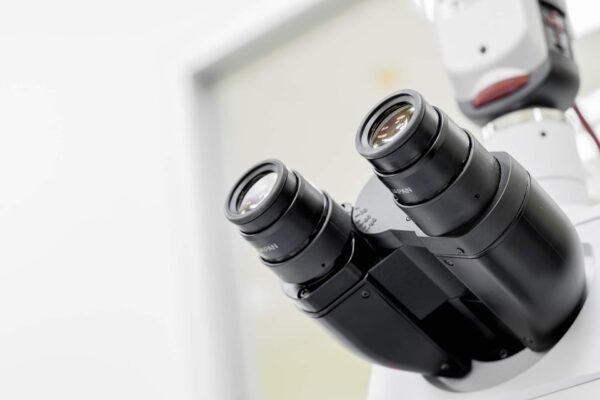

Overview
Immunocytochemistry (ICC) is a laboratory technique that allows for the detection of specific proteins or antigens in cells using selective probes that can be visualized under a microscope. This protocol describes two-step ICC using a primary antibody against a specific target and secondary antibody labeled with a fluorescent probe. The following protocol is adjusted for 3D bioprinted samples consisted of cells encapsulated in a hydrogel.
Materials
- PBS
- PBS/0.1% Triton-X solution
- PBS/0.1% Triton-X/1% Bovine Serum Albumin (BSA)
- 10% formalin or 4% paraformaldehyde (PFA)
- DAPI solution
- Mounting medium
- Silicone grease
- Microscope glass slide
- Coverslip
Methods
- Carefully aspirate media from your sample;
- Wash your 3D bioprinted construct in PBS x1 for 5 minutes. Make sure the entire construct is immersed in PBS;
- Fix with 10% formalin or 4% PFA for 30 minutes at room temperature by immersing the construct in the fixative;
- Wash 3x with PBS/0.1% Triton-X/1% for 15 minutes at room temperature to permeabilize cell membranes;
- Incubate samples with primary antibody diluted to the final concentration in PBS/0.1% Triton-X/1% BSA overnight at 4°C;
- Wash 3x for 15 minutes in PBS/0.1% Triton-X;
- Incubate sample with secondary antibody diluted in PBS/0.1% Triton-X/1% BSA for 2h at room temperature protected from light;
- Wash 3x for 15 min in PBS at room temperature;
- Dilute DAPI to a final concentration of 0.1µg/ml to 10µg/ml in PBS and immerse 3D bioprinted construct in the resulting solution. Incubate for 15 minutes at room temperature protected from light;
- Wash 3x for 15 min in PBS at room temperature;
- Take a microscope glass slide and manually extrude some grease silicone to create a well slightly larger than your 3D construct (Glass slide treatment protocol);
- Move your 3D bioprinted construct to silicone well on the microscope glass slide;
- Add mounting medium to the silicone well until completely filled;
- Place a coverslip on top and press slightly. Silicone grease will not be solid, so perform this step carefully;
- Proceed with imaging using a selected method. We recommend confocal fluorescence imaging or two-photon microscopy for 3D samples. Remember to keep thin coverslip closer to the microscope objective for better imaging results;
Warnings
Depending on the thickness of the construct, biomaterial permeability, and geometry it might be necessary to increase incubation times for the ICC protocol. Every incubation time can be performed on a shaker or a orbital shaker to help with the diffusion of the solution.
Imaging will only work properly if the biomaterial used is opaque and can be penetrated with the light used by the microscope. Some biomaterials might display autofluorescence and interfere with imaging – try to select appropriate filters if this problem occurs.

